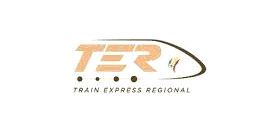 Senegal’s Rail Revolution: A Gateway for Tourism Growth
Senegal’s Rail Revolution: A Gateway for Tourism Growth
Senegal’s railway system is undergoing a renaissance, creating exciting opportunities for travel agents across Africa. The ambitious modernization program, spearheaded by the Train Express Régional (TER) and the revitalization of the historic Dakar-Bamako line, promises to transform the nation's transportation landscape and unlock significant tourism potential.
The TER, West Africa’s first electrified railway, has already proven its popularity, carrying over 21 million passengers since its launch in 2021. The system's Phase 2 extension to Blaise Diagne International Airport (AIBD), set to open in the latter half of 2025, will further enhance connectivity and boost tourism by providing seamless travel between the airport and Dakar city center. Future phases will expand the network to outlying regions, integrating with urban transport and stimulating economic development.
Simultaneously, the historic Dakar-Bamako metre-gauge line, dating back to the early 20th century, is being revived. The initial Dakar-Tambacounda segment will receive upgrades including new signalling systems and secured crossings. The eventual reconnection with Mali underscores the project's regional significance, fostering cross-border tourism and trade.
Pape Ahmeth Diop, Director of Vigilance Technologie Services (VTS) and a leading railway safety expert, emphasizes the critical role of safety in this transformation. Diop, instrumental in implementing the TER's Safety Management System, advocates for a phased approach to modernization, incorporating international safety standards and advanced technologies.
The modernization program addresses key challenges facing Senegal's railways. The existing metre-gauge network, built over a century ago, suffers from degradation and lacks modern safety features. Environmental factors, such as heavy rains and sand encroachment, further complicate operations. The TER, with its digital control systems, secure crossings, and CCTV surveillance, stands in stark contrast to the older network's vulnerabilities.
Diop proposes a comprehensive safety reform strategy, including the establishment of an independent railway safety authority aligned with international standards. A phased implementation will allow for the gradual deployment of new technologies, minimizing disruptions. Staff training is crucial, with programs designed to equip personnel with the skills to manage modern systems. Technological innovation, including ERTMS signalling, AI-powered maintenance tools, and centralized digital control, will enhance safety and efficiency.
Community engagement is also central to Diop's vision. Public awareness campaigns will educate residents about railway safety. Community watch groups will monitor high-risk areas, and level crossings will be redesigned in collaboration with local stakeholders. Socioeconomic integration, through local employment opportunities and dialogue with community leaders, will ensure that railway projects benefit surrounding areas.
Senegal's strategic location positions it as a regional rail hub, with potential corridors extending to neighboring countries. The success of this regional integration depends on standardized safety frameworks and cross-border cooperation. Senegal's leadership in railway modernization sets a precedent for West Africa, demonstrating the transformative potential of safe and efficient rail networks.
This railway revitalization offers immense opportunities for African travel agents. The TER's expansion, coupled with the Dakar-Bamako line's rehabilitation, will enhance accessibility to key tourist destinations, create new travel routes, and improve the overall visitor experience. The focus on safety and sustainability aligns with global travel trends, attracting environmentally conscious travelers.
Travel agents can capitalize on these developments by crafting innovative itineraries that incorporate rail journeys. The TER provides efficient access to Dakar and its surrounding areas, while the Dakar-Bamako line offers a unique cultural and historical experience. By combining rail travel with other tourism products, such as wildlife safaris, cultural tours, and beach holidays, agents can create compelling packages that cater to diverse interests.
Senegal's railway transformation is more than just an infrastructure upgrade; it's a catalyst for tourism growth and economic development. By embracing this opportunity, African travel agents can unlock new revenue streams, enhance their product offerings, and contribute to the sustainable growth of the region's tourism industry.
